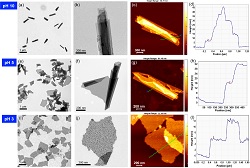 |
| Nanosheets, rolled up and flattened--Courtesy of OIST |
Nanoparticles are precise objects that, in the biotechnology world, are often intended for the purpose of carrying drugs to a targeted position in the body. Manufacturing these nanoparticles is also a game of precision, and researchers at the Okinawa Institute of Science and Technology (OIST) in Japan have developed what they call a nanosheet, which is capable of holding drugs and is also reproducible for a number of different treatments.
The nanosheet is a structure only a few nanometers thick, according to the university, but microns in length and width, giving it a surface area that can be measured in centimeters, even. And like a flat piece of paper, the nanosheet can roll up into a scroll shape, giving it the ability to hold drugs in its folds and then release them when needed.
"A nanosheet is like pizza dough," lead author and developer Jeong-Hwan Kim said in a statement. "Whatever you like to put on it--one topping, two toppings, anything--you can. … The advantage of the rolling means that this nanosheet can entrap many markers or drugs securely inside the body."
The polymer used to make these nanosheets responds to the acidity of its environment--in high-pH conditions, the sheets would curl, and in more acidic environments, the nanosheet would become flat again. The particles are also responsive to near-infrared light, which allows them to be tracked as they move through a patient's body, according to the study published in the journal Applied Materials & Interfaces.
Because of their sensitivity to pH, these particles could someday be used to target tumors, releasing drugs there and keeping healthy cells safe from the effects of chemotherapy. It would also decrease the amount of drug needed for treatment.
- here's the report
- and here's the abstract